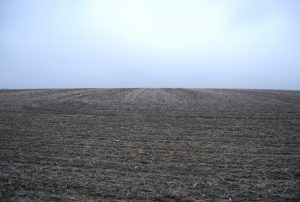The Dirt of Deeper Change
 I remember a time when Gill and I moved into a new home. It had a backyard! With my farmboy zeal I got stuck into turning the yard into a garden. Some things were already in place – mature fruit trees, a tap for the hose. Some things had to go – obvious things like weeds and rubbish and rusty forgotten tools, but also some healthy plants and shrubs that were simply in the wrong place; they had had their time and now their fruit was waning, their shade was blocking the sun, and their suckers were running amok. After a hard days labour with all manner of tools and a lot of sweat, digging and hoeing and raking, I proudly revealed the outcome to my young wife.
I remember a time when Gill and I moved into a new home. It had a backyard! With my farmboy zeal I got stuck into turning the yard into a garden. Some things were already in place – mature fruit trees, a tap for the hose. Some things had to go – obvious things like weeds and rubbish and rusty forgotten tools, but also some healthy plants and shrubs that were simply in the wrong place; they had had their time and now their fruit was waning, their shade was blocking the sun, and their suckers were running amok. After a hard days labour with all manner of tools and a lot of sweat, digging and hoeing and raking, I proudly revealed the outcome to my young wife.
She was not impressed. “Well done,” she said with a subtle friendly hint of mockery, “you’ve made some… dirt!”
We had discussed the grand plan, of course – how we could have new fruit trees and a veggie patch. But some of the in-between steps were unclear to her, and also to me. I couldn’t have predicted that a pipe was in the way of where I had plans for a plum tree. Some new beds needed borders, and we’d simply run out of money to line them with something nice; rough outlines from pruned branches would do for now. And of course, I’d been delayed in starting; the season was getting on and some of what we hoped to plant would need to wait for next year.
The lush garden was going to happen! It would grow in its own good time. It would shift and develop as new ideas came along. It would become something like what we had thought it would be, and a whole lot different as well.
But, for now, I had just made dirt.
The metaphor in all this, I hope, is obvious. There are ways of leading organisations (and my experience is with churches) which are akin to maintaining a garden. They are effective and necessary: rotating crops, mowing lawns, pruning in season, timing the harvest, and even making improvements and modifications.
But deeper changes are changes of identity; they shift things, they are akin to making a yard into a garden.
These changes tackle the deeper questions of who we actually are, and the essence and application of our mission and calling. On the ground it often comes with a sense of stagnancy (“everything is always the same”) or of urgency (“we’re not doing what we need to be doing, we’re wasting ourselves”). This leads us to re-examining the old, both embracing and letting go of the things we’ve inherited. It leads us to dreaming some dreams about what might be, even as we realise that it might not turn out exactly as planned. It allows significant change.
And early on in the process, it can often look like all we do is just make dirt.
Leadership at this point can seem fraught and complex. It requires assertion because some things must be done away with. It requires courage, because some of the “systems” of the organisation will begin to fail or fall as they no longer have their normal referents. It requires vision, because what is imagined must be first and foremost. The temptation is to retreat from the plan: to patch things up by making adjustments to a rota, or tweaking a job description. But this will not be enough, the leader must show the way to “go into the soil and die” in order to live again.
At this point, a leader may feel that everything is collapsing around them. And they will need to grieve and mourn along with everyone else. Because things are less predictable, they will often have to do a lot themselves, or with a close core team who can hold to the sense of identity and call that has motivated the change in the first place. Others, who knew what to do the way things were, may feel idle or unwanted. They will need to be encouraged to have a well-earned fallow season, and to then find the place where they flourish in the new.
Slowly, as green shoots appear – in God’s timing not ours – the time of dirt fades away. Amorphous plans begin to take a shape in reality. And the systems for maintaining and enjoying the new thing will come more easily.
But you can’t go directly there.
Sometimes, it looks like you’ve sweated hard, and worked yourself to the bone, just to make dirt.
Photo by Nigel Chadwick licensed under CC 2.0 SA



